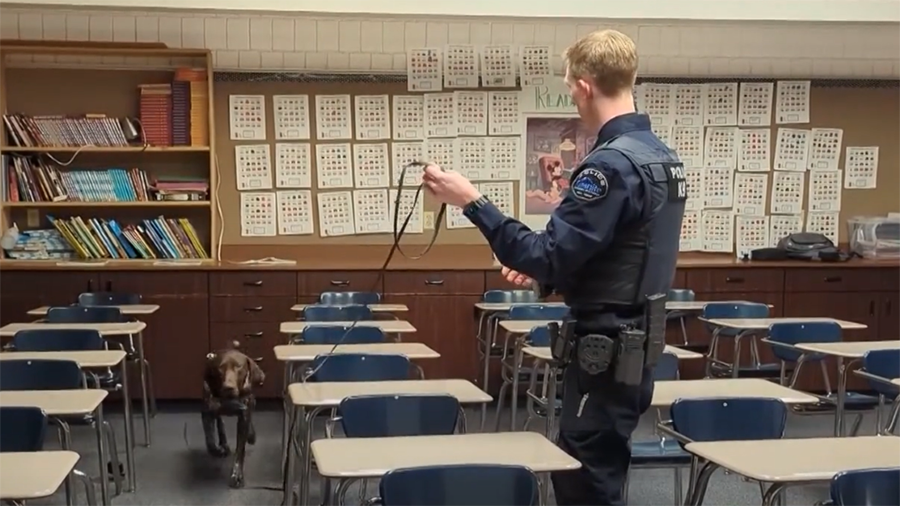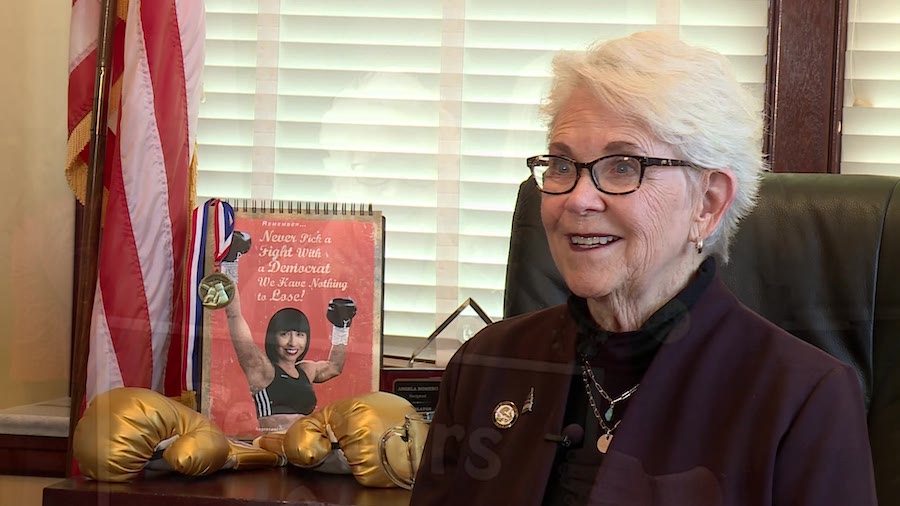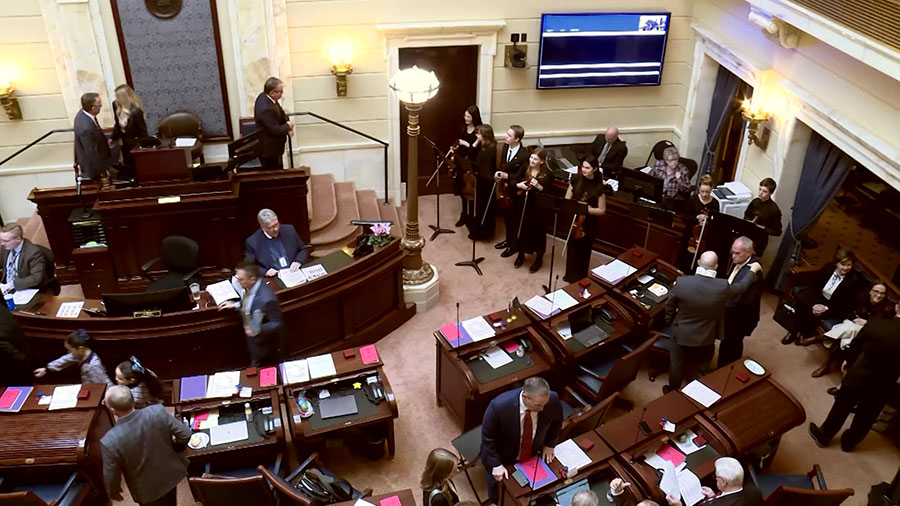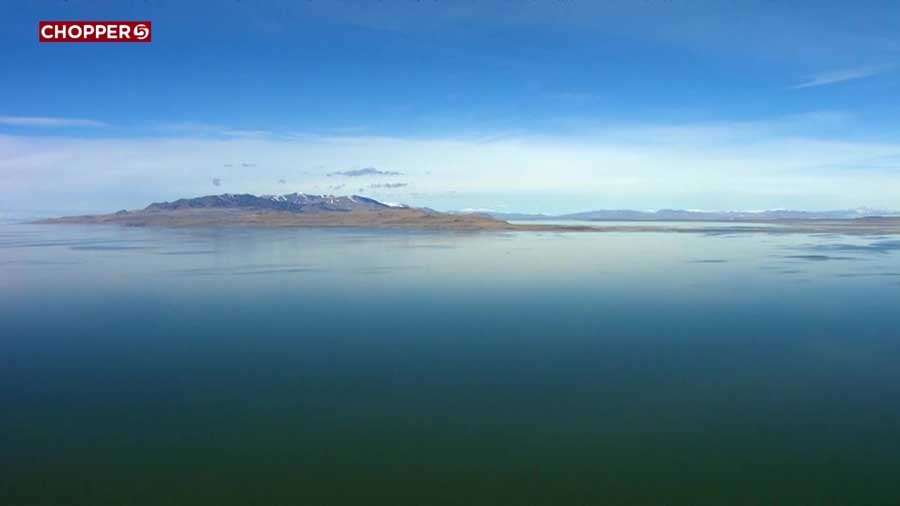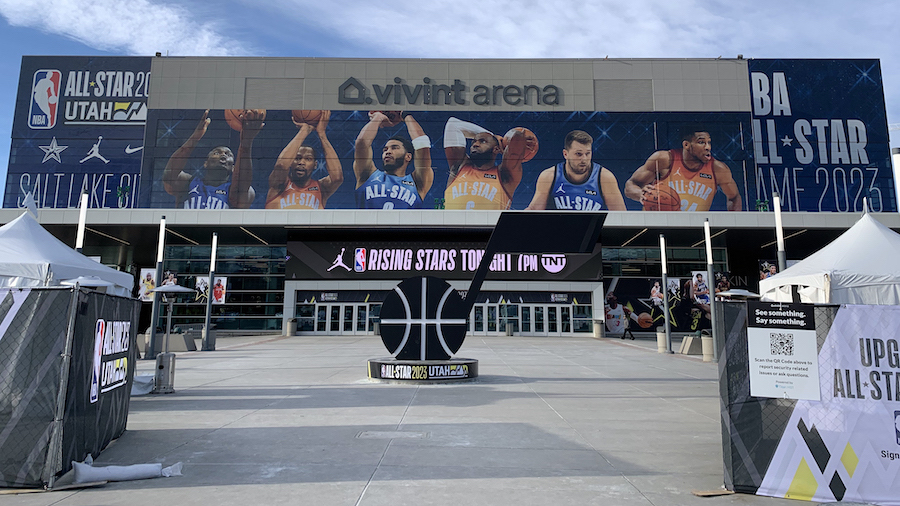KSL+: Changing Landscape for Wildland Firefighters
Jul 15, 2021, 7:24 PM
“So you got the increased fuel load, and now you’re putting the weather on top of it. It’s just the perfect storm really to create the kind of mega fires we’re seeing now.”
We see a year after year, the fire season isn’t what it used to be.
“It’s definitely going to take a toll on the body, not just physically but emotionally, mentally.”
And it’s having an impact on those who are on the front lines.
“When I first joined the fire service, there was lists that were two to three pages long of people that wanted to do it. Now, there’s nobody on the list, and you can’t even beg people to come. It’s that bad. It’s that bad.”
We’re out here in Duchesne County talking about the changing fire season. And the changes many say needs to happen with firefighters. I’m Matt Rascon, and this is KSL+.
I spoke with Jason Porter, about his career 21 year career, which he started right out of high school. He’s now the assistant fire management officer for the Green River BLM district,
Jason Porter: My career has primarily been in Utah. I was probably five or six years into my career before I really started being exposed to fires happening around communities. It seemed like every fire used to be way out there, you know, super remote, we were just worried about the fire itself. Now, as communities spread into that urban interface, we’re seeing more and more fires on the doorsteps of communities. So it cranks up the stress, it cranks up the risks.
Matt Rascon: What is a week, what is the day as far as hours and you know, days of the week that you’re on?
Jason Porter: When we’re not there on fire assignment, the shifts can go up to the 16 hour day. When we commit to a fire, that’s a minimum of two weeks that you’re committing to be gone plus whatever travels incurred during that time as well. When situations do get a little bit more, you know, fast paced in regards to the amount of fires and the need for resources, sometimes those tours of duty, we call them will stretch out to maybe a 21 day assignment, but we try for 14 days, give them a couple of days off, and then reset that clock to where they can go out and do it again. It’s a lot. It’s a lot, it’s definitely demanding
Matt Rascon: And the fire season is changing.
Jason Porter: For example, when I started in 1999, we didn’t bring a lot of people on board until June, we really we didn’t see a lot of fires until June. And that would wane you know, September into October. Now we’re, we’re seeing these fires start, locally even, March to November. So it’s definitely putting more of a strain. If you look at that 14 day tour that they’re just doing back to back to back when we’re busy. It’s been a lot more strain on our resources now.
Matt Rascon: So instead of seasonal, it’s more just year round.
Jason Porter: Exactly. We talk about fire year, we’ve stopped using the term fire season long ago is even if it’s not just here locally. It’s always fire season somewhere, whether it’s the southeast, whether it’s Alaska, the desert southwest, there’s always somewhere to send our folks to help out
Matt Rascon: And Utah is struggling to keep up.
Jason Porter: So our firefighters typically start out about $13.45 an hour. That’s definitely something that we’ve been talking about a lot more in depth lately is now that we’re out of this seasonality, and we’re in these fire years that are demanding more of our people. And we’re seeing other organizations around us such as Cal Fire, for example, out in California paying sometimes three times as much as what a lot of our firefighters are making. We definitely recognize there’s a need to look at our workforce as a whole and start making some transitions into something that’s not as seasonal. And that’s going to be better for supporting families and that work life balance for sure.
Matt Rascon: Over the past few years, the state has seen a drop in quality applicants for seasonal fire positions. And they’ve struggled to hold on to many of their employees.
Jason Porter: I think one of the challenges we face right now is just coming up with a model that’s going to keep people around longer. I think a lot of people get in this for a couple years. And I don’t think it’s just the financial side of it. It’s a difficult job, you’re away from home, you’re away from comforts a lot. And those are the things we’re trying to address, you know, multiple different challenges we’re facing there to that whole retention and recruitment kind of question.
Matt Rascon: According to the State’s website, the median take home pay including overtime for a first level fire tech in 2020 was just over $24,000. Level two nearly $26,000. Level three jumps to $46,000 and fire tech four at $67,600. Now assuming they work May through October, eight hours a day, the hourly rate ranges from $23 to $67 an hour. But of course, they work more hours than that. If it were their hourly rate for the year, those numbers would be cut in half.
Jason Porter: We’ve talked about the seasons getting longer. I think you can turn on the TV every summer and see that these fires are getting bigger. You know, it’s becoming more complex, it’s becoming more of an issue. And I believe our agencies realize that, you know, we’ve got to make some changes. We’ve got to keep people doing this because the need for this service isn’t going to go away anytime soon.
Matt Rascon: My colleague Mike Hedrick spoke with the state fire management officer. He’s with the Division of Forestry, Fire and State Lands
Brett Ostler: Things are just burning extreme for this time of year. And we’re definitely seeing it on the ground.
Mike Headrick: What would you say, you know, if you were to do a timeline and say, in a normal year, this is where we’d be at right? Or where we should be at right now. How far ahead of schedule, if you will, are we?
Brett Ostler: So based off of some of our ERCs [energy release components] and BIs, we’re approximately six weeks ahead of schedule. So the amount of fuel that we’re burning, the ERCs, we typically see end of July, 1st of August.
Mike Headrick: When you look at the last couple of decades, is it legit this year?
Brett Ostler: It really is. I’ve been fighting fire in Utah for 30 years. And this is the worst I’ve ever seen it. The way the ERCs are running right now, I’ve never seen it this high, this early in the season ever. It’s the worst, it is the worst. It is as bad as everyone says it is.
Mike Headrick: So how are you guys dealing with that with it being so, so difficult? What are the big challenges you’re facing?
Brett Ostler: So we’re just trying to keep up with the demand of fires and moving folks around, trying to get them the time off the days off that they need so that they can keep their wits end about themselves. It’s become a fire year for us. Fire seasons are going longer, they’re starting earlier. And we have to keep our resources to a point where they’re not getting burned out. We only have so many folks to do this job. And we have to take what we have and just rotate our resources around the state.
Mike Headrick: When you’re talking about these firefighters out there and trying to put these things out, what kind of days are we looking at? What kind of schedule is that? Because you know, a lot of people are working a nine to five, heck, so many people are working from home nowadays too. And so when you look at their schedule and what their day looks like, what does it look like?
Brett Ostler: So a typical day for anyone out on the fires is typically 16 hours a day. It’s hot. It’s hard work. I mean, it’s not sitting in a computer in an air-conditioned office. It’s out on the fireline where it’s hot, digging in the rocks, digging in the gravel. It’s not work for your typical person. It’s something that you’ve got to want to do. And obviously, honestly, the pay is not that great. But it’s something that we’re working on here in the state. We had House Bill 65 run by Representative Casey Snyder that passed and we’re working on changing that. I said we don’t have people leave because of burnout, we have people leave us because they have better opportunities to make more money at other organizations. And that’s what they’ll do.
Mike Headrick: Average salary for someone fighting these fires. What is it?
Brett Ostler: Well, for your first year rookie coming out on the fire? I mean, they’re making about 16 bucks an hour.
Mike Headrick: I mean, you think about some of the other jobs out there, especially right now. I mean, you can go past fast food restaurants and there’s they’re starting some people at 18, 19 bucks an hour. You talked about being in air conditioning and, and let’s be honest, the threat out there too. I mean, they’re putting their lives on the line, right? You have airplanes going in and they’re dropping water. You have some on the ground, you know, digging these lines, but what’s the reality of this is endangering their lives.
Brett Ostler: Well, anything is possible out there. I mean, you have rocks that roll out, trees that roll out, you could have an aircraft come down over the top of them. They do make hazard pay when they’re out there on the line. But it’s not that much. I mean, it averages probably two bucks an hour. So you know, you do have those individuals making $16 an hour, it depends on which agency they’re working for as far as what hazard pay looks like. But you ask yourself a question, how much would I want to make to risk my life to do a job? Firefighters all over the country do that same thing every day. Why do you think they do it? I think it’s a desire to help, want to be out there. It’s a camaraderie that just being with the guys, gals. Whether it’s federal volunteers, state employees, male, female, it’s just a bond that people get when they’re out there working together in the outdoors. A lot of people say they love it, they’d rather be outdoors working than sitting in an air-conditioned office behind a computer. So it’s just everyone’s different.
Mike Headrick: How difficult is it to recruit right now?
Brett Ostler: It’s become a lot harder over the last couple of years, the new generation of kids coming up and coming out of school, they’re looking for the tech jobs, they may make more money. But there is there is people out there that do want to do this work. And we recruit from all over the United States, our local crews that we have here in the state, we pull individuals from all over the United States.
Mike Headrick: Have you seen are there fewer and fewer that are applying for these types of jobs?
Brett Ostler: Yes, the numbers are dwindling fast.
Mike Headrick: Like what are we looking at?
Brett Ostler: It’s less than half. I mean, when I first joined the fire service, there was lists that were two to three pages long of people that wanted to do it. Now there’s nobody on the list. And you can’t even beg people to come.
Mike Headrick: So what’s that mean for the future,
Brett Ostler: The future doesn’t look good. You’ve seen a push from the federal agencies to raise pay. We’ve seen a push from the state agencies to raise pay. We’re doing what we can, but we also rely on volunteer fire departments who don’t make anything. And these fires are getting bigger, they’re getting larger. And employers are not wanting to let people go as much on a wildland fire. They’re okay to let their people go on a structure fire, because that’s impacting someone’s lives. Whereas a wildland fire, maybe not so much. And so we’re starting to see a little bit of pushback from employers throughout the state of saying if it’s just a brush, fire, you can’t go. And even the even the volunteer fire departments are having a difficult time recruiting people. Because like I said, if they’re not getting paid for it, they need to be somewhere where they’re making money.
Mike Headrick: And would you say that’s really what it comes down to is pay? Is there something else about it? Or do you believe it comes down to finances?
Brett Ostler: I think the bottom line is pay. I mean, you’ve got to make a living for your family, you’ve got to be able to support yourself. And without that, you might as well be looking for something where you can do that.
Mike Headrick: Because in the summer, especially in the summer, I mean, how often are these firefighters away from their families?
Brett Ostler: Well, they could be gone up to 21 days, the normal rotation is 14 days. But we can extend them if things are bad enough. There may be times when we can R&R these individuals in place, if they’re out of state, they’ll work 14 days, take two days off, and we put them right back out on the line for another eight days, seven days, whatever that looks like. If it gets bad enough, and we are looking like we’re gonna get that this year, we’re already nationally in a planning level of four. When we get to five, it means that resources are just not available. And we’ll have to start doing what we have to do with our resources to stretch.
Mike Headrick: What do you do at that point?
Brett Ostler: We hope. I know hope is not an option a lot of times but we do the best that we can do with what we have. You know, we’ve got a lot of good, dedicated people that love this work that they do. Our only thing is to make sure that what they do is safe and that we don’t burn them out.
Mike Headrick: Sometimes people think we use scare tactics or hey, it’s a lot bigger than what it really is. You talked a little bit about how dry it was. And yes, it’s exactly as bad maybe worse than what we’re hearing about with the situation you’re in with firefighters. Is it worse than what it seems?
Brett Ostler: It’s getting there? You know, I don’t know. We kind of have to see what the next couple of years brings as far as what people want to do with their lives. I think with this pandemic that happened, people kind of got used to stay in home a little bit. And they feel that with some of the money that they’re receiving from the federal government, they don’t need to work anymore. But eventually people are going to have to come back to work and whether they choose this line of work or not, I think that will, you know, we’ll see what happens in the future. But we are seeing a lack of people showing interest in wildland fire.
Mike Headrick: How do you manage all of this? So when you have fewer in essence and fewer employees? How do you manage? It’s almost like fewer employees more work? Is that safe to say?
Brett Ostler: It is safe to say and here in the state of Utah, we rely on our cooperators, which are the fire departments, whether they’re volunteer or full-time. We rely on a lot more on them to do some of that work if we don’t have the staff to do it.
Mike Headrick: How many do you have working and forgive me for being a little bit ignorant to this? But how many do you have working for the state before you start pulling from those local fire departments?
Brett Ostler: So in total, we have about 160 state firefighters and that that goes anywhere from our fire wardens in each county, to our crews resources that we have at the Lone Peak Conservation Center.
Mike Headrick: So 160, how’s that compared to years past?
Brett Ostler: The numbers are about the same. We’ve managed, though that same number for the last several years.
Mike Headrick: And so with that number, are you are you hoping to get more than 160? Is there enough in the budget to have more than 160?
Brett Ostler: Well, those are some discussions we’re gonna have to have with the legislature. We’ve just completed our fire strategic plan, and we need to change something. Fire seasons are getting longer, they’re getting hotter, they’re getting drier, we haven’t made that shift as a state yet and to adapt to what that is. And we need to take a good close look at that and see what the numbers really are.
Mike Headrick: When’s the last time the state made kind of a bigger shift to address this concern?
Brett Ostler: It’s been at least 15 years.
Mike Headrick: And we’re talking about lawmakers as far as pay or is it something?
Brett Ostler: They haven’t done much with pay that I that I can ever remember. This last legislative session, like representative Casey Snyder ran House Bill 65, which addresses the pay issue. But it was in the early 2000s when they made a big push to hire full-time fire wardens in each county. And that was huge at the time. And we’ve kind of kept that same model for 21 years. And we are burning our people out.
Mike Headrick: What are you looking at with this house bill? And I’m not super familiar with it. But where did it go?
Brett Ostler: So House Bill 65 asked us to do a study of federal pay scales, Fire Department pay scales throughout the West. And we’ve done that. We’ve got to sit down with Representative Snyder and work out a strategy for where we go in the future. But we did receive some good information back and we’re gonna start implementing that come July 1. We are going to have to, you know, sit down and really figure out what the future continues to look like as far as pay and retention for our wildland firefighters in the state.
Mike Headrick: There’s a mentality that government works slowly. For something like this, how quickly do things need to start moving?
Brett Ostler: I would say that, you know, we’re already behind the eight ball. We like I said, we’ve had some discussions with some of our representatives. They’re fully supportive of what we’re doing. We just really need to sit down and look at how we strategize, moving the wildland fire program in the state into the future.
Mike Headrick: What do you think that strategy is?
Brett Ostler: There’s still a lot of unknowns. There’s many out there who think that we need to be like Cal Fire. And I don’t agree with that. But we need to be Utah Fire and we need to develop what that looks like.
Mike Headrick: What’s Cal Fire?
Brett Ostler: So Cal Fire [California Fire], don’t use a lot of their fire departments to fight fires. They’ve got a huge organization that fights the fires in California. We don’t have a huge organization. We rely on the fire departments in the state and we work very well with our government cooperators. We work interagency here in this state and we work well together. We just got to figure out the numbers to make it work even better.
Mike Headrick: So if there’s a big fire down in that corner of Salt Lake County, how does that work then when you talk about interagency and firefighting?
Brett Ostler: Initially those 911 calls will come into a 911 dispatch center and they’ll roll out the local fire departments and immediately they can determine that they’re going to need assistance, those calls will start coming into the Interagency Fire dispatch centers in the state. And that’s when we start getting all of our other partners involved. So the US Forest Service, the BLM, the state of Utah, we all convene. We all fight fire together, it doesn’t matter what color a truck you show up in, what color your shirt is, what color your hardhat is, we’re all there to do one job. And that’s to put the fire out.
Mike Headrick: This seems to be effective. Is that what you’re saying?
Brett Ostler: Absolutely. In the state of Utah, we fight fire interagency, like nobody else does.
Mike Headrick: How quickly are these other agencies able to make it on scene typically?
Brett Ostler: So it just depends on I mean, we’ve got resources scattered throughout the state. So I mean, sometimes it could be quick, sometimes it may take 30 minutes to an hour. Our fire departments here in the state do a very good job of fighting fire until we can get there. For the most part, I think the 88% of the fires are caught in initial attack before that fire gets over 10 acres. So we do have some fires that are caught by the locals and they do a tremendous job. It’s those fires that we lose control of that we have to bring in that additional help for
Mike Headrick: I was just sitting there thinking while you’re talking, as far as resources are concerned, is that something that you need more of as well, when you’re talking about whether it be planes dropping retardant and water or helicopters, whatever it may be more trucks? Are our resources running thin as well?
Brett Ostler: I mean, we could always use more resources. Right now we’re doing okay, we are getting stretched quite thin. The State of Utah does not manage any aviation resources, we do have the ability to use the National Guard when we have to. But we rely on our federal partners for all the aviation contracts in the state to fight fire. That’s something that we that we need to look at as well. As far as aviation, we could bring a lot to the table. As far as heavy equipment, we just don’t have that set up here in the state.
Mike Headrick: How often do you have to call firefighters in from out of state?
Brett Ostler: It happens quite a bit. And we don’t bring in a lot of the other Fire Department per se. But we do bring in a lot of other federal agencies. So we have other BLM and forest service personnel come in from out of state all the time.
Mike Headrick: Is there a pretty good camaraderie there, where they help us we help other guys? Is that how it works?
Brett Ostler: Yes. So we have a system set up, it’s called IROC, when other states are burning, we send resources to help them, they send resources to help us. We also have another system called emac is a compact where we assist other states when they need help. And so there’s all kinds of mechanisms set up for us to support other states.
Mike Headrick: Yeah, the number of human start fires has just dramatically gone up over the last two years, we’ve got to have folks to start having better fire sense. Instead of you know, dragging those chains down the road, or, you know, if they blow a tire and start a fire. I mean, we’d appreciate him to pull over and at least, you know, say, hey, it was me that started the fire. You know, we don’t we’re not going to hold anybody liable possibly for that. I mean, we will have a conversation with them if the tire was completely worn out. We just got to have people be smarter. But over the last two years, we know for sure, the number of human starts has more than doubled.
Mike Headrick: Is it maddening?
Brett Ostler: It is I mean, it’s crazy to think that people are just out there starting fires. And I don’t know that they do it on purpose. But I do know some of them. I mean, they’ll walk away from a campfire and let it just smolder out. And we can’t continue to do that. Because nine times out of 10 that fire is going to turn into a catastrophic event.
Mike Headrick: You think that’s laziness, ignorance. What do you think it is?
Brett Ostler: I think it’s both laziness, ignorance and just not knowing I mean, most of the time people will walk away, and they’ll see on the news that there was an abandoned campfire and they’ll think Well, that wasn’t ours, when it more than likely probably was theirs. We can’t stress enough that if you’re going to start a fire, put the fire out. I mean, pour water on it, stir it, make sure you can stick your hand in it before you leave.
Mike Headrick: At this point, it seems like common knowledge.
Brett Ostler: We we’ve stressed is so much that people have just got to be smarter in what they’re doing. And I don’t know what it’s gonna take for us to get that word through to the to the public, but at some point, they’re going to have to realize that 90% of these fires are caused by them. I mean, it’s their taxpayers money that’s paying us to fight these fires. And if we didn’t have to do that, that money could go other places.

